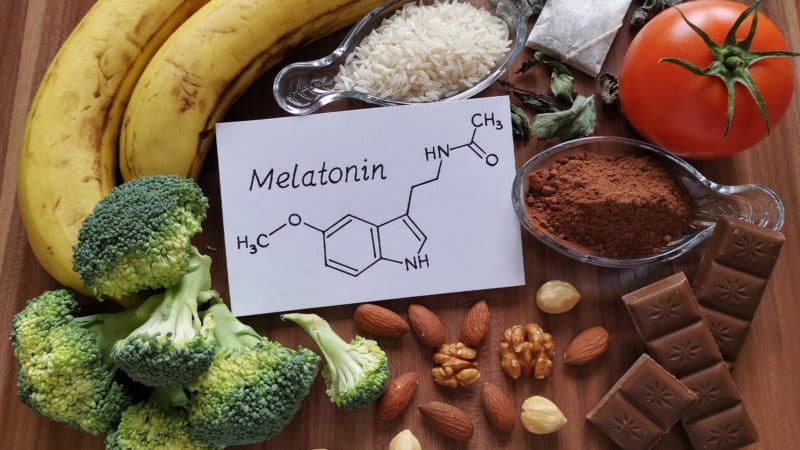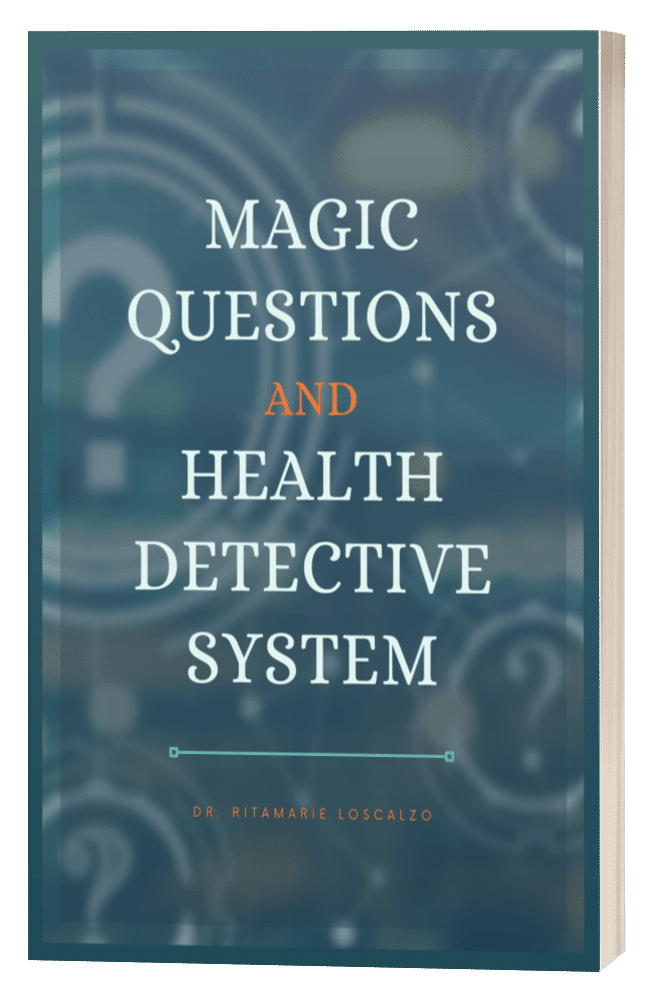HOME > reinvent healthcare podcast > Melatonin and the Cell’s Energy Powerhouse
Melatonin and the Cell’s Energy Powerhouse
By Ritamarie Loscalzo

Melatonin is an ancient molecule found in plants, bacteria, and animals.
It is primarily known as the hormone released by the pineal gland that has long been associated with controlling the sleep-wake cycle.
However, there is a second source of melatonin found in concentrated amounts throughout body tissues and organs. It plays the role of a potent antioxidant that is now believed to support the immune system and protect against multiple diseases.
So where does it come from?
Melatonin x 2
It is now understood that melatonin comes from two separate systems, hormonal and tissue.
The hormone melatonin which plays a key role in the circadian rhythm is not stored, but released directly into the bloodstream by the pineal gland. Its synthesis and secretion are controlled by the suprachiasmatic nucleus (SCN). Located in the hypothalamus, the SCN is the master clock of the body.
The melatonin found in virtually every body tissue and organ, including the liver, colon, the entire gastrointestinal tract and immune system, is at a level 100 times higher than that found in the blood.
The melatonin in tissue does not display a circadian rhythm but instead acts as an antioxidant. It is believed to be synthesized in, taken up by, and concentrated in the mitochondria.
The Evolution of Melatonin
Melatonin is believed to have been one of the earliest radical scavengers that evolved to fight the cellular and organ decay brought on by oxidative stress. Its participation in circadian rhythm regulation and sleep promotion likely came later.
Because its scavenging promoted survival, it’s been theorized that melatonin synthesis developed right alongside the bacteria that served as the precursor to mitochondria.
Mitochondria’s production of adenosine triphosphate (ATP), the life-giving energy source for all cells, generates reactive oxygen species (ROS) which is ironically a primary source of oxidative stress in the body.
The damage caused by free radicals is generally located where radicals are produced. This is because they only need travel an extremely short distance before inflicting harm on their healthy neighboring molecules. Scavenger proximity is crucial in order to be effective.
Melatonin needed to be close by in order to do its job. This is another reason why it is believed melatonin is concentrated in the mitochondria of the cells and therefore, in the tissue.
Melatonin and the Mitochondria
Melatonin is synthesized in and used by the mitochondria that produce it. This process supports the health of the mitochondria in multiple ways.
Melatonin, along with its metabolites, neutralize ROS. Its continuous free radical scavenging activities along with that of its metabolizers is referred to as the “free radical scavenging cascade reaction”.
Melatonin improves the efficiency of the mitochondria’s electron transport chain which reduces the formation of ROS. It also acts as a signaling molecule by upregulating the production of antioxidant enzymes.
It protects against mitochondrial DNA (mtDNA) damage, enhances mitophagy, and improves mitochondria’s homeostasis. This all serves to optimize the health of the mitochondria, the importance of which can’t be overstated.
(In my blog, The Mitochondrial Genome – Your second set of DNA, I discuss how critical mitochondrial health is to overall health.)
Indirect Benefits of Melatonin
Through its relationship with mitochondria, melatonin has far-reaching benefits that optimize health and wellbeing.
Melatonin protects against several neurodegenerative diseases related to mitochondrial dysfunctions. Clinical studies have shown it to delay the onset of Huntington’s disease and improve symptoms associated with MS.
Found throughout the immune system, melatonin is proving to be an immune modulator with a double action. It boosts immunity against foreign invasion while down regulating pro-inflammatory cytokines and up-regulating anti-inflammatory cytokines.
The brain’s high metabolic activity requires an abundance of oxygen which makes it one of the body’s most susceptible areas to free radical attack. Being a small molecule, melatonin is an excellent antioxidant for the brain as it can penetrate the blood-brain barrier.
It may improve pregnancy outcomes by aiding the healthy maturation of female oocytes and prevent cancer cells from metabolizing glucose anaerobically, known as the Warburg Effect. This can inhibit tumor growth.
Future Research
Once thought to have a limited purpose, most researchers now believe they have only scratched the service when it comes to understanding the impact melatonin may have on disease prevention and health optimization.
If you are a healthcare practitioner that wants to expand your understanding of what it means to support clients in achieving their optimal health, I encourage you to take a look at my Nutritional Endocrinology Practitioner Training program (NEPT).
It’s a supportive community that looks forward to everything science has to offer at the same time honoring the strength the body has to heal itself.
Join us!
Resources
Melatonin: A Mitochondrial Targeting Molecule Involving Mitochondrial Protection and Dynamics – PMC
Melatonin as an Anti-Aging Therapy for Age-Related Cardiovascular and Neurodegenerative Diseases – PMC
Melatonin in Mitochondria: Mitigating Clear and Present Dangers | Physiology
Melatonin’s neuroprotective role in mitochondria and its potential as a biomarker in aging, cognition and psychiatric disorders | Translational Psychiatry
Melatonin in Mitochondrial Dysfunction and Related Disorders
Join us!
You may have read this before in my post, Metabolic Syndrome – The Most Common Disease You’ve Never Heard Of?:
Resources
Melatonin: A Mitochondrial Targeting Molecule Involving Mitochondrial Protection and Dynamics – PMC
Melatonin as an Anti-Aging Therapy for Age-Related Cardiovascular and Neurodegenerative Diseases – PMC
Melatonin in Mitochondria: Mitigating Clear and Present Dangers | Physiology
Melatonin’s neuroprotective role in mitochondria and its potential as a biomarker in aging, cognition and psychiatric disorders | Translational Psychiatry
Melatonin in Mitochondrial Dysfunction and Related Disorders
“Our bodies are a beautiful, complex, interwoven tapestry of systems that work collectively and cooperatively. Most importantly, none work independently.”
Nowhere is this more evident than in the process of autophagy.
Known as the body’s recycling system, these days autophagy is primarily associated with its positive benefits triggered by fasting. However, recent studies have clearly demonstrated that autophagy has a greater variety of roles than once believed.
Although there is still much to be learned about this complex, synergistic process, science is gradually revealing how critical it is to overall health.
Non-selective Autophagy
Two components the body must have to sustain life are protein synthesis and energy.
Without proteins in usable forms, cells would not be able to repair cellular damage or even maintain their structure. Without energy in the form of ATP (adenosine triphosphate), cells would not have the ability to perform the many processes critical to sustaining life.
During times of starvation, when the body senses there is not enough nutrition being provided to sustain either of these critical processes, cells activate autophagy in order to rapidly break down the old or burned-out cells and cell components to get what is needed for cell metabolism.
This is also considered non-selective autophagy because entire cells are consumed in bulk to support metabolism.
Basal Autophagy
Basal autophagy is the type of autophagy that takes place on an ongoing basis, acting as the cells’ garbage disposal, eliminating damaged components that would otherwise become toxic such as intracellular proteins and organelles.
It preserves the health of cells and tissues by replacing old and damaged cellular components with fresh ones. In this way it promotes metabolic homeostasis and prevents degenerative disease.
This type of autophagy is also considered “selective autophagy” as specific cell components are targeted for disposal as opposed to an entire cell.
This involves complicated signaling pathways triggered by enzymes that mark the specific component for removal. An example of this would be mitophagy which is mitochondrial autophagy.
Mitophagy
Mitochondria are essential organelles that regulate cellular metabolism, homeostasis, and stress responses. Properly functioning mitochondria are also key to energy generation. In my article, The Mitochondrial Genome – Your second set of DNA, I go into more detail as to why the health of mitochondria is so important.
Mitophagy is the main mechanism of mitochondrial quality and quantity control.
When a mitochondrion is damaged, certain enzymes (PINK1 and Parkin) attach themselves to its outer membrane. Molecule chains are then created which signal the cell’s autophagic machinery. The damaged mitochondrion is then encapsulated and transported to a cell’s lysosome where it is broken down. This in turn signals the cell to make more mitochondria.
Studies have discovered that mitophagy impairment can lead to tissue damage, developmental issues, and inflammation. In addition, it contributes to aging and age-related diseases such as cancer, neurodegenerative disorders, and cardiovascular disease.
Recent studies have also found that impeded mitophagy may play a key role in renal diseases.
More Discoveries
Mitophagy is just one example of what science is discovering about autophagy.
It is now known autophagy plays a key role in the immune system’s ability to eliminate pathogens and present antigens. It feeds a developing embryo before it gains access to the maternal blood supply and influences lifelong development. It impacts aging, can trigger cell death, and both suppress or support tumor growth.
Science rooted in reductionism, which I cover in Believing Isn’t Always Seeing! The Power of Functional Food may never lead to a complete understanding of autophagy or the far-reaching influence this dynamic, synergistic, and highly complicated process has on the overall health of the body.
But what IS known is foundational health supports optimal health and optimized autophagy equals optimized energy.
As a functional healthcare provider, when we can empower clients to check the boxes on the basics, they are well on their way to finding the health they believed to be irretrievable. And although diet, exercise, and fasting can kick-start autophagy, finding the right balance can be tricky. But there is help.
If you are fed up with the broken healthcare system and looking for a better, more effective way to support your clients, you can find it in my Nutritional Endocrinology Practitioner Training program (NEPT). It’s your way out of the frustrating, disease-focused system so many of us once felt trapped in.
If you are searching for answers to health issues you’ve been led to believe are non-existent and feeling trapped in the same broken system, don’t be discouraged. There are answers and a supportive community waiting for you in my Empowered Self-Care Lab.
Regardless of where you are at in your journey, no matter how depleted or discouraged you may be feeling, there is help.
You have myself, an energized community, and answers waiting for you!
References
Autophagy and Metabolism – PMC
An Overview of Autophagy: Morphology, Mechanism, and Regulation – PMC
Frontiers | Mechanisms and Functions of Mitophagy and Potential Roles in Renal Disease
Autophagy and mitophagy in cellular damage control – PMC
Diversity in the Regulation of Autophagy and Mitophagy: Lessons from Parkinson’s Disease
Share this:

Are you feeling stuck?
Do you feel as if something is missing from your practice that's keeping you from delivering breakthrough outcomes for your clients?.
Recent Posts
Our Programs
Nutritional Endocrinology Practitioner Training (NEPT)
The Mastery and Certification tier is our flagship program and provides everything you need to feel confident as a practitioner who knows how to get results that lead to healthy and happy clients.
Functional Assessment Mastery
Explore the relationships between the most important hormones and their relationship with nutrition.
Functional Nutrition Mastery
Learn how to support your clients to eat and supplement in a way that reduces and eliminates chronic symptoms.
Medical Disclaimer: The information on this website is not intended to replace a one-on-one relationship with a qualified health care professional and is not intended as medical advice. It is intended as a sharing of knowledge and information from the research and experience of Dr. Ritamarie Loscalzo, drritamarie.com, and the experts who have contributed. We encourage you to make your own health care decisions based upon your research and in partnership with a qualified health care professional.
Disclosure: Sometimes (but not always), when I share resources in my programs, newsletter, and on my website, I'm using an affiliate link, which means I do make money if you buy. My credibility is extremely important to me; therefore, I only endorse the products, services, and people I believe in. DrRitamarie.com is independently owned and the opinions expressed here are my own.
Click here to see our Privacy Policy.







